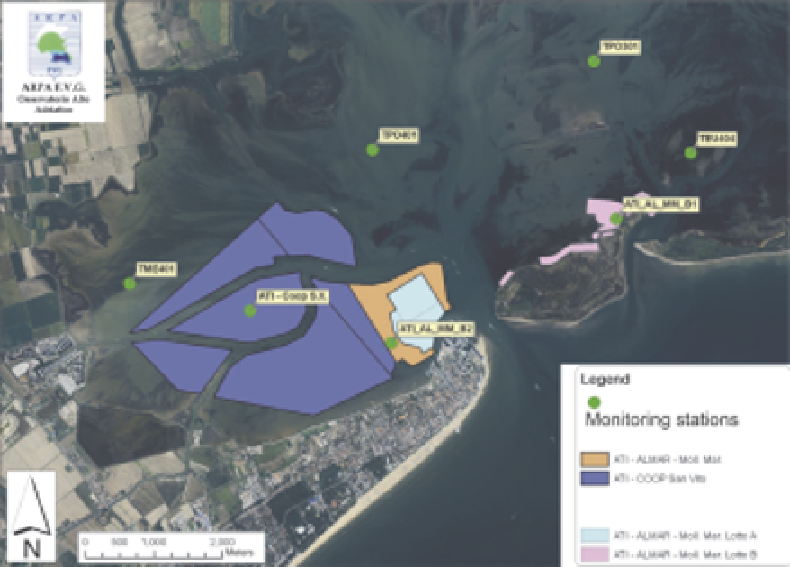Environmental Engineering Reference
In-Depth Information
support from EU to realize an hatchery plant sited close to the town. This hatchery has a
theoretical production of 200,000,000 ind/year, whereas that in ALMAR is 400,000,000
ind/year. The new hatchery equipped itself of biologists able to follow the entire productive
process.
In 2006 a Decision of the Regional Government of Friuli Venezia Giulia approved the new
lagoon areas suitable for the fattening of Manila clam, thank to a research conducted by the
Department of biology of the University in Trieste in collaboration with ALMAR Society.
The study took into consideration: sediment texture, depth profile, hydrology, primary
production, macrozoobenthic communities, presence or absence of seagrass and
macroalgae, growth rates of clams for each considered zone, microbial suitability in
agreement to UE rules, chemical conditions of sediments, anthropogenic pressures, potential
disturbs to wild birds, closeness to navigation channels and so on.
At present the total area devoted to Manila clam farming amounts to about 800 hectares
(Fig. 8) of which 130 are in full regime of production.
Fig. 8. Areas devoted to Manila clam farm in the Lagoon of Marano and locations of
sampling stations for the environmental monitoring
In 2010 a new harvesting gear was introduced in Lagoon of Marano to operate inside the
assigned area to Cooperative St. Vito (see ATI - COOP San Vito in Fig. 8). This gear is a small
hydraulic clam dredge (Fig. 9), called “
idrorasca
”, originally designed and constructed to be
used in the Manila clam natural banks located in the transitional waters of Po River Delta. The
use of this new harvesting method was authorized in 2004 after a series of researches inherent
the environmental sustainability of this gear in the delta area (Turolla, 2008).


Search WWH ::

Custom Search